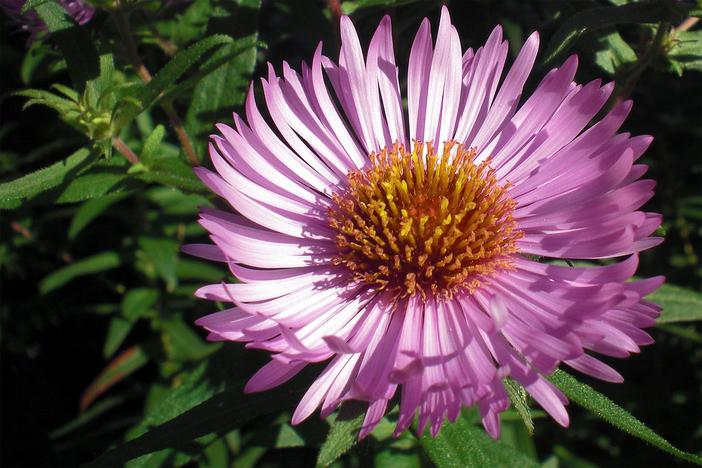New England Aster
(Symphyotrichum novae-angliae)
New England Aster (Symphyotrichum novae-angliae)
/
/

onnola
CC BY-SA 2.0












































































Estimated Native Range
Summary
This species is valued for its late-season blooms, typically from August to September, which provide a critical nectar source for pollinators. Its vibrant flowers and ease of maintenance make it a popular choice for wildflower gardens, meadow plantings, and borders. New England Aster thrives in full sun but can tolerate part shade, and it prefers moist, well-drained soils. While it is generally disease-resistant, powdery mildew can be a problem in crowded plantings with poor air circulation. To maintain vigor, divide clumps every few years. It is also important to monitor for potential invasiveness, as it can spread aggressively in some conditions.CC BY-SA 4.0
Plant Description
- Plant Type: Herb
- Height: 3-6 feet
- Width: 2-3 feet
- Growth Rate: Moderate
- Flower Color: Pink, Purple
- Flowering Season: Summer, Fall
- Leaf Retention: Deciduous
Growth Requirements
- Sun: Full Sun
- Water: Medium
- Drainage: Fast, Medium, Slow
Common Uses
Bee Garden, Bird Garden, Border Plant, Butterfly Garden, Deer Resistant, Drought Tolerant, Fire Resistant, Fragrant, Low Maintenance, Salt Tolerant, Showy Flowers, Street Planting, Water Garden
Natural Habitat
Moist meadows, wetlands, stream banks, and prairies
Other Names
Common Names: New England Daisy , Michaelmas Daisy , Hairy Michaelmas-Daisy , Raublatt-Aster , Neuengland-Aster , Rauhblatt-Aster , Aster De Nouvelle Angleterre , Luktaster
Scientific Names: Symphyotrichum novae-angliae , Aster novae-angliae , Virgulus novae-angliae , Aster roseus , Aster spurius , Aster novae-angliae var. roseus , Aster novae-angliae f. roseus , Aster repertus , Aster novae-angliae f. novae-angliae , Aster amplexicaulis
GBIF Accepted Name: Symphyotrichum novae-angliae (L.) G.L.Nesom